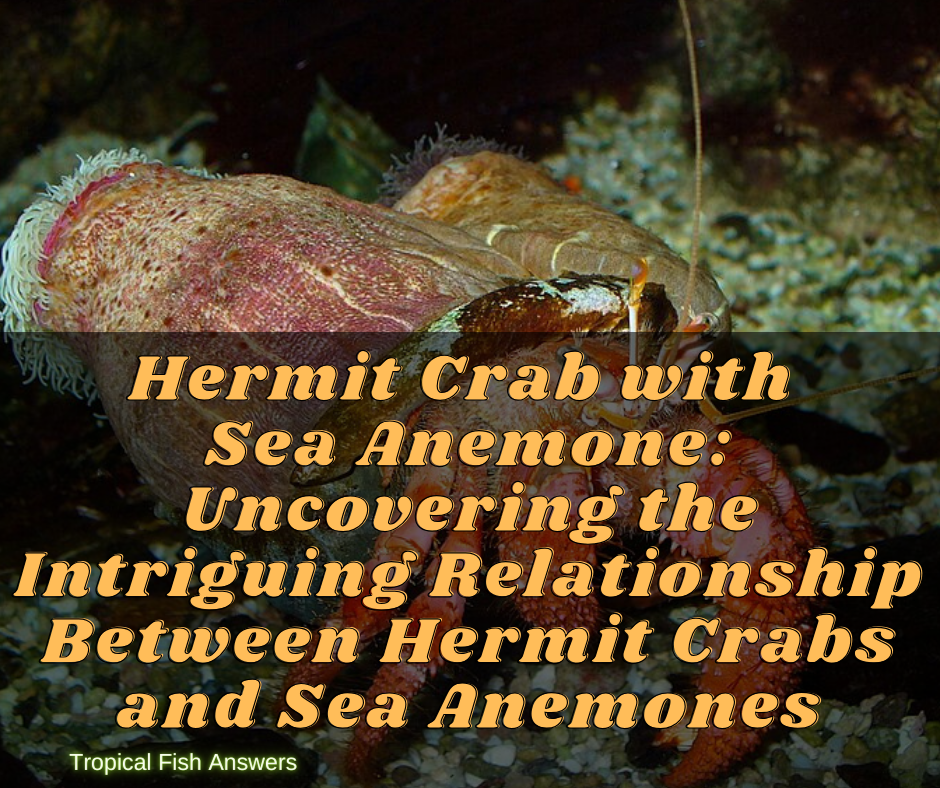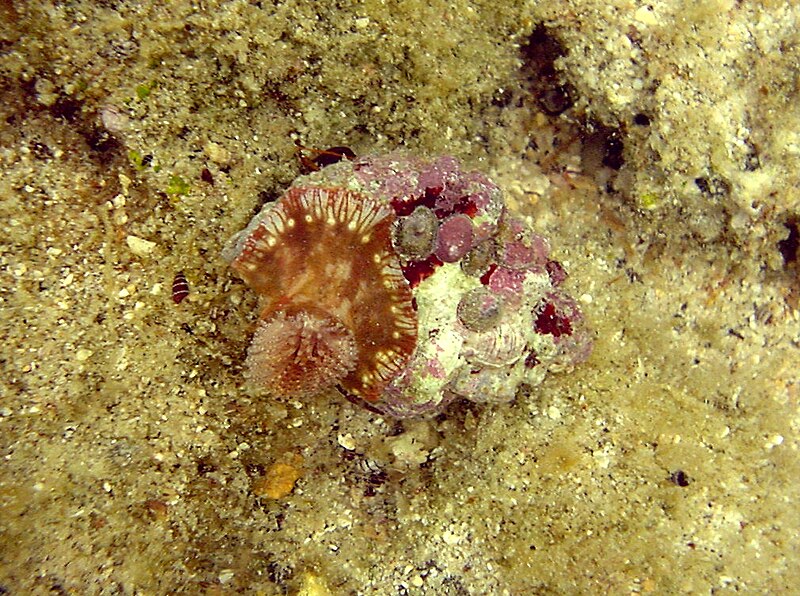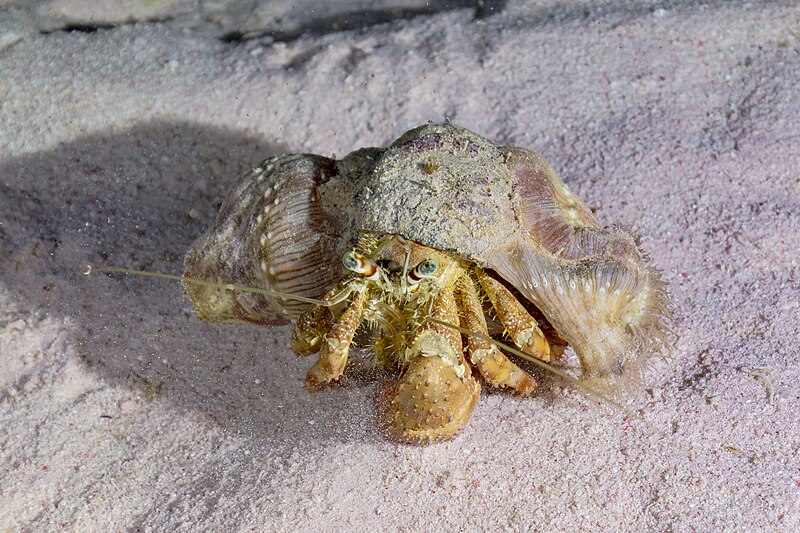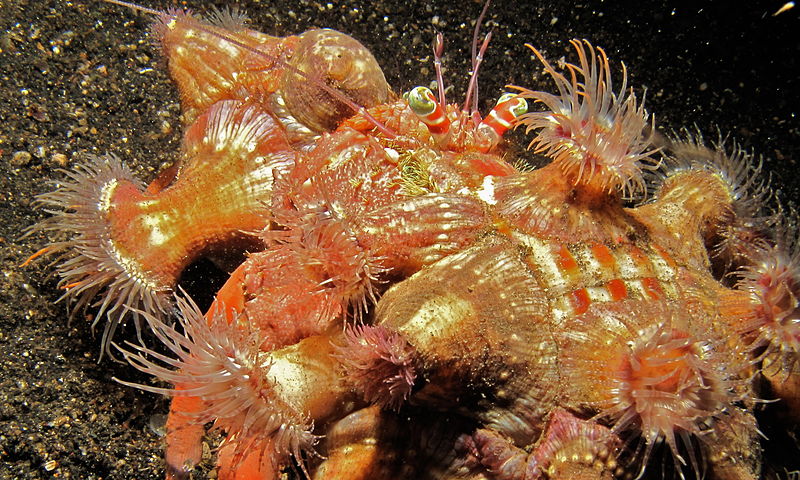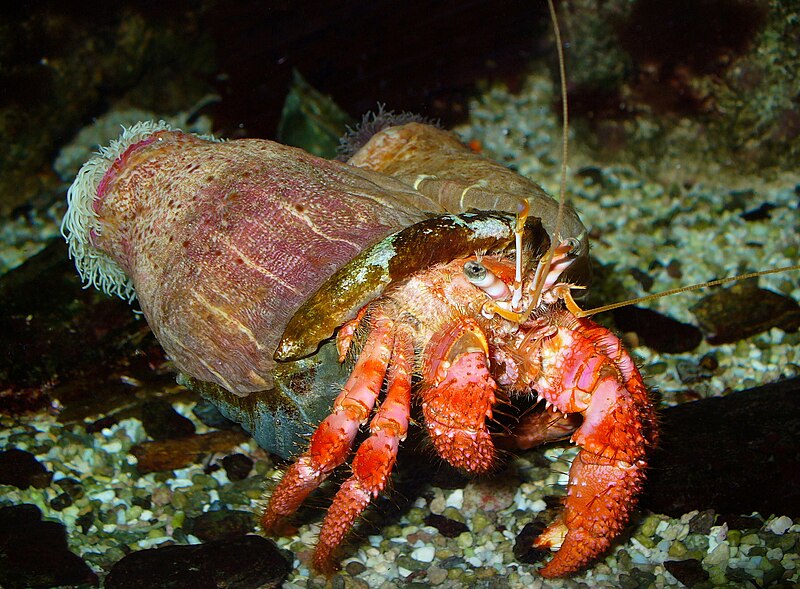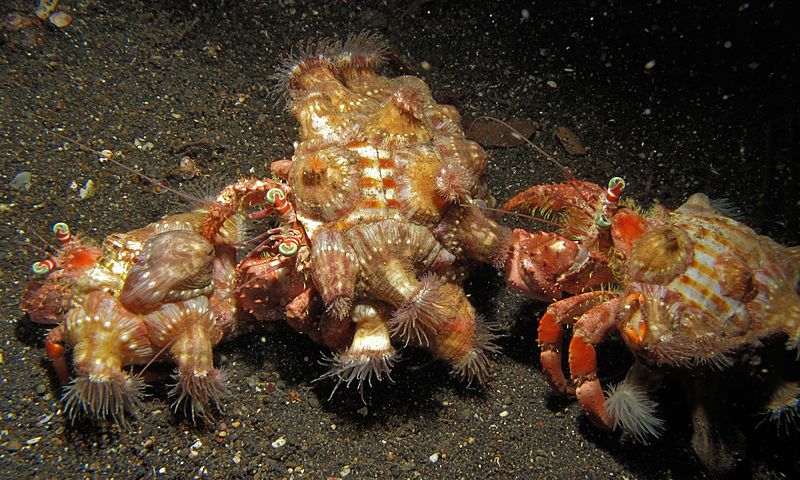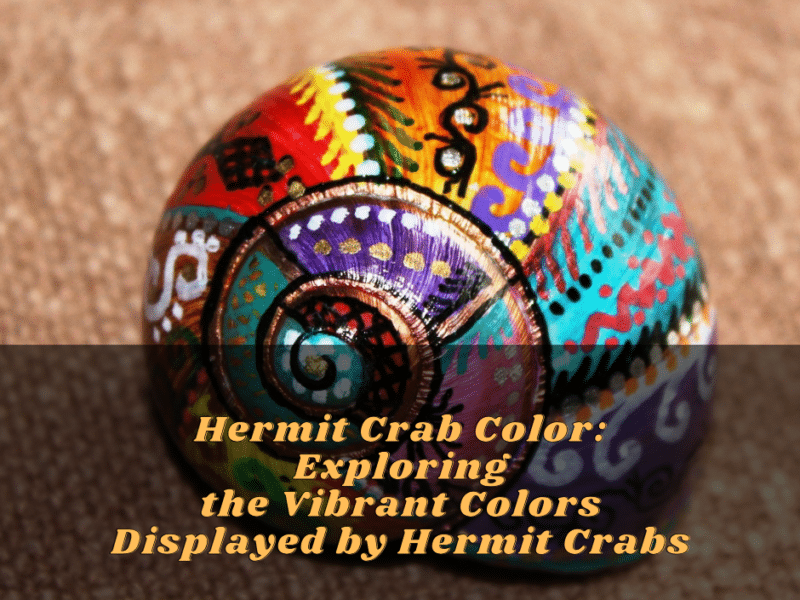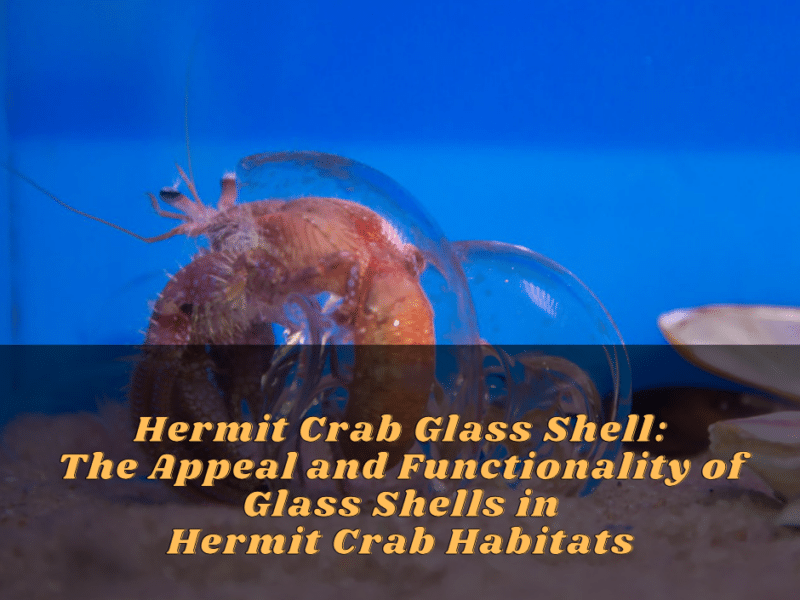Introduction
The ocean is filled with fascinating creatures and remarkable relationships, and one such intriguing duo is the hermit crab and the sea anemone. These two seemingly unrelated creatures have formed a unique partnership that showcases the beauty of nature’s symbiotic relationships. In this article, we will explore the fascinating relationship between hermit crabs and sea anemones and unravel the secrets behind their symbiotic nature.
The Fascinating Relationship Between Hermit Crabs And Sea Anemones
At first glance, it may seem odd to find a small hermit crab carrying a sea anemone on its shell. However, this unlikely pair has developed a mutually beneficial relationship that enables both creatures to thrive in their marine environment. The sea anemone provides protection for the hermit crab, while the hermit crab offers mobility and access to nutrients for the sea anemone.
The relationship begins when a hermit crab seeks out a sea anemone and carefully attaches it to its shell using its pincers. The sea anemone then becomes a living, mobile shelter for the hermit crab, providing it with protection against predators. The sea anemone’s stinging tentacles act as a deterrent for potential threats, offering the hermit crab a valuable line of defense.
Hermit Crab with Sea Anemone – Understanding The Symbiotic Nature Of Their Partnership
This unique partnership between hermit crabs and sea anemones is a classic example of symbiosis, where two different species live together in a mutually beneficial relationship. The hermit crab offers the sea anemone transportation and access to food sources, as it moves and forages for its own sustenance. In return, the sea anemone provides protection and camouflage for the hermit crab, allowing it to blend in seamlessly with its surroundings.
The relationship between the two creatures goes beyond physical benefits. Studies have shown that hermit crabs carry specific types of sea anemones that are better adapted to their natural habitat. This strategic partnership ensures the survival and prosperity of both parties involved.
This unique bond between hermit crabs and sea anemones not only showcases the wonders of nature but also serves as a reminder of the complex and interconnected web of life that exists beneath the ocean’s surface. It also highlights the importance of preserving marine ecosystems to safeguard these incredible relationships.
In conclusion, the relationship between hermit crabs and sea anemones is a fascinating example of symbiosis in the natural world. As the hermit crab provides protection and transportation for the sea anemone, the sea anemone offers safety and camouflage for the hermit crab. This unique partnership serves as a reminder of the intricate relationships that exist in nature and the importance of preserving the delicate balance of our marine ecosystems. So the next time you spot a hermit crab with a sea anemone on its back, take a moment to appreciate the complexity and beauty of this extraordinary partnership.
Benefits For Hermit Crabs
Protection From Predators Through Sea Anemones’ Tentacles
The unique relationship between hermit crabs and sea anemones offers several benefits for the hermit crabs. One of the key advantages is protection from predators through the sea anemones’ stinging tentacles. When a hermit crab attaches a sea anemone to its shell, the tentacles serve as a deterrent for potential threats. Any predator that attempts to attack the hermit crab will be met with a defensive response from the sea anemone’s powerful tentacles, providing the hermit crab with a valuable line of defense.
The sea anemones are equipped with specialized cells called cnidocytes that contain stinging nematocysts. These nematocysts can immobilize or even kill small organisms, discouraging predators from preying on the hermit crab. This unique adaptation allows the hermit crab to navigate its marine environment with an added layer of protection, giving it a higher chance of survival.
Transfer Of Sea Anemones To New Shells For Continued Protection
As hermit crabs grow, they outgrow their shells and need to find new ones to accommodate their increasing size. The relationship with sea anemones offers an additional benefit during this process. When a hermit crab changes shells, it carefully transfers the sea anemone to the new shell, ensuring continued protection.
The hermit crab’s pincers delicately detach the sea anemone from its old shell and reattach it to the new one. This transfer ensures that the hermit crab maintains the defensive advantage provided by the sea anemone’s tentacles. By carrying the sea anemone to its new shell, the hermit crab benefits from constant protection against predators, even during the vulnerable transition period.
This transfer process requires precise coordination between the hermit crab and the sea anemone. Research suggests that chemical cues and instinctual behavior play a role in facilitating this symbiotic interaction. The hermit crab knows the importance of keeping the sea anemone close as it finds a new and suitable shell, ensuring a seamless continuation of their mutually beneficial partnership.
In conclusion, the relationship between hermit crabs and sea anemones offers several benefits for the hermit crabs. The sea anemones’ tentacles provide protection from predators, acting as a powerful deterrent. Additionally, the transfer of sea anemones to new shells ensures that hermit crabs can maintain the defensive advantage throughout growth and shell changes. This fascinating partnership showcases the intricate adaptations and cooperation found in nature and highlights the importance of preserving these delicate ecosystems. The next time you encounter a hermit crab with a sea anemone on its shell, take a moment to appreciate the remarkable bond and the advantages it provides for both species.
Benefits For Sea Anemones
Sea anemones also benefit from their unique relationship with hermit crabs. This symbiotic partnership offers advantages that contribute to the well-being and survival of sea anemones in various ways.
Access To Food Scraps Released By Hermit Crabs
One of the benefits for sea anemones is the availability of a consistent source of food. Hermit crabs are scavengers and feed on a variety of organic materials, including leftover food scraps or decaying matter. As they move and scavenge for food, they inadvertently release tiny food particles into the water near the sea anemones.
The sea anemones, with their specialized tentacles, are able to capture and consume these food particles, benefiting from the hermit crab’s activities. This access to additional food sources enhances their nutrition and increases their chances of survival.
Opportunity For Mobility Through Hermit Crabs’ Movements
Sea anemones are sessile creatures, meaning they are typically anchored in place and unable to move. However, their association with hermit crabs provides them with a unique opportunity for mobility.
By attaching themselves to the shell of a hermit crab, sea anemones can be transported to different locations as the hermit crab moves in search of food or a new shell. This mobility allows sea anemones to explore different habitats, find optimal conditions for growth and reproduction, and avoid unfavorable environments.
The hermit crab’s movements provide the sea anemones with a means of dispersal, enabling them to colonize new areas and expand their range. This increased mobility enhances their survival and reproductive success by increasing their chances of finding suitable conditions and avoiding potential threats.
In conclusion, the relationship between hermit crabs and sea anemones is a mutualistic one, benefiting both species in several ways. While hermit crabs gain protection from predators through the sea anemones’ tentacles and assistance during shell changes, sea anemones enjoy access to food scraps released by hermit crabs and the opportunity for mobility through the hermit crabs’ movements. This fascinating partnership exemplifies the intricate interconnectedness of species in nature and underscores the importance of preserving these delicate ecosystems. The next time you encounter a hermit crab with a sea anemone on its shell, take a moment to appreciate the remarkable bond and the advantages it provides for both species.
The Process Of Attachment
How Hermit Crabs Pick Up And Attach Sea Anemones
The fascinating relationship between hermit crabs and sea anemones extends beyond providing protection and access to food. The process of attachment is a complex and intriguing one that showcases the intricate nature of this symbiotic partnership.
Hermit crabs possess specialized appendages called “chelipeds” that they use to grasp and hold objects. When a hermit crab encounters a sea anemone, it carefully picks it up using its chelipeds. The hermit crab then moves the sea anemone towards its shell and delicately attaches it to its exoskeleton. This attachment process requires precision and finesse to ensure that the sea anemone remains secure.
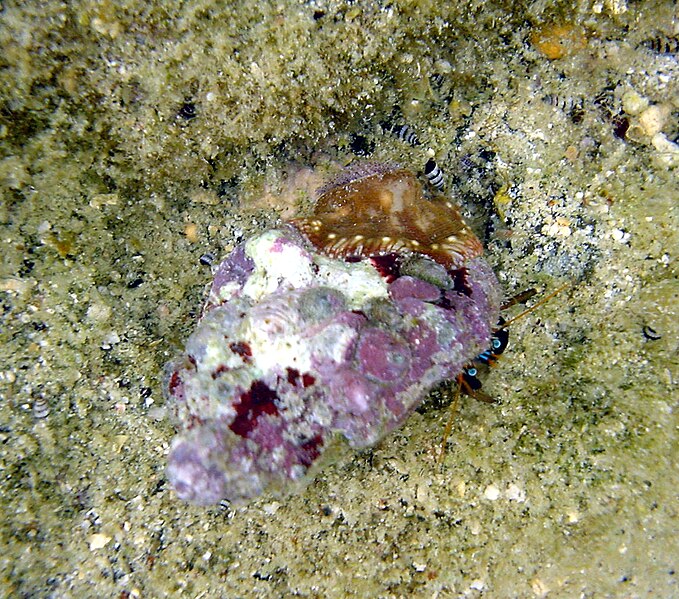
Scientists believe that the attachment between hermit crabs and sea anemones is facilitated by a sticky substance secreted by the sea anemone’s tentacles. This substance allows the sea anemone to cling to the hermit crab’s exoskeleton and remain firmly attached during the hermit crab’s movements.
Exploring The Transfer Of Sea Anemones To New Shells
As hermit crabs grow, they need to periodically find larger shells to accommodate their increasing size. During the process of shell change or “molting,” hermit crabs detach themselves from their current shell and search for a new one. This presents an interesting opportunity for the sea anemones attached to their shells.
When a hermit crab finds a suitable new shell, it carefully moves its body into the new shell, leaving behind its old one. As the hermit crab transitions to the new shell, the sea anemone attached to its exoskeleton also detaches and transfers to the new shell. This transfer is crucial to ensure the continued mutualistic relationship between the hermit crab and sea anemone.
The transfer of sea anemones to new shells provides several benefits. Firstly, it allows the sea anemones to continue receiving protection from potential predators that the hermit crab’s movements provide. Secondly, it ensures that the sea anemones have access to a consistent source of food through the hermit crab’s scavenging activities.
Furthermore, the transfer to a new shell provides the opportunity for the sea anemone to colonize a different area and explore new habitats. This enhanced mobility allows sea anemones to seek out optimal conditions for growth, reproduction, and survival, ultimately contributing to the overall well-being of the species.
In conclusion, the attachment process between hermit crabs and sea anemones involves careful grasping and secure attachment facilitated by a sticky substance secreted by the sea anemone’s tentacles. Additionally, the transfer of sea anemones to new shells during the hermit crab’s molting process allows for continued protection, access to food, and increased mobility. This intricate relationship highlights the remarkable adaptations and mutual benefits found in nature.
Case Studies And Observations
Examples Of Hermit Crabs With Sea Anemones In Their Habitat
The relationship between hermit crabs and sea anemones can be observed in various coastal habitats around the world. One notable example is the Indo-Pacific region, where hermit crabs of the genus Dardanus are often found with sea anemones attached to their shells. These hermit crabs carefully select sea anemones that provide them with protection and access to food. The sea anemones, in turn, benefit from the hermit crabs’ movements, which allow them to capture more prey and obtain shelter from potential predators.
In the Caribbean, another fascinating example is the association between the hermit crab species Petrochirus diogenes and the sea anemone Barnea candida. Studies have shown that these hermit crabs actively seek out specific individuals of the sea anemone species to form their symbiotic partnership. The sea anemones, once attached to the hermit crab’s shell, benefit from the enhanced mobility and exposure to different feeding grounds provided by their crab hosts.
Observations Of The Interaction Between The Two Species
Scientists have closely observed the interaction between hermit crabs and sea anemones to better understand the dynamics of their relationship. One interesting observation is that hermit crabs exhibit a certain degree of selectivity when choosing a sea anemone to attach to their shells. They often inspect multiple sea anemones before making a final decision, suggesting that they actively evaluate the compatibility of potential partners.
Furthermore, researchers have discovered that hermit crabs regularly groom their sea anemone partners. They use their specialized appendages to remove debris and ensure that the sea anemones’ tentacles remain clean and functioning properly. This grooming behavior not only promotes the well-being of the sea anemones but also strengthens the bond between the two species.
Another intriguing observation is the role of the sea anemones in protecting the hermit crabs. When approached by potential predators, hermit crabs with attached sea anemones tend to display a more aggressive behavior, using their pincers to deter attackers. The sea anemones’ stinging cells also provide an additional layer of defense, discouraging predators from approaching the hermit crab.
In conclusion, the relationship between hermit crabs and sea anemones is a fascinating example of symbiosis in the animal kingdom. Through case studies and observations, we have discovered the selection process hermit crabs undergo to find suitable sea anemone partners and the active grooming behavior they exhibit towards their symbiotic counterparts. The mutual benefits of protection and access to food make this relationship crucial for the survival and well-being of both species in their respective habitats.
Conclusion
The relationship between hermit crabs and sea anemones is a fascinating example of symbiosis in the animal kingdom. Through case studies and observations, scientists have uncovered the intricacies of this unique partnership. The hermit crabs carefully select sea anemones that provide them with protection and access to food, while the sea anemones benefit from the hermit crabs’ movements and obtain shelter from potential predators. This relationship is crucial for the survival and well-being of both species in their respective habitats.
Appreciating The Intriguing Relationship Between Hermit Crabs And Sea Anemones
The interaction between hermit crabs and sea anemones is truly captivating. Researchers have observed that hermit crabs exhibit selectivity when choosing a sea anemone partner, evaluating the compatibility of potential mates. They groom their sea anemone partners, removing debris and ensuring their tentacles remain clean and functioning properly. This grooming behavior strengthens the bond between the two species and promotes the well-being of the sea anemones.
Additionally, the sea anemones play a crucial role in protecting the hermit crabs. When approached by potential predators, hermit crabs with attached sea anemones display more aggressive behavior, using their pincers to deter attackers. The sea anemones’ stinging cells provide an additional layer of defense, discouraging predators from approaching the hermit crab. This symbiotic relationship allows both species to thrive and survive in their coastal habitats.
Highlighting The Importance Of Symbiosis In Nature
The relationship between hermit crabs and sea anemones serves as a reminder of the importance of symbiosis in nature. Symbiotic interactions, where two different species rely on each other for survival, are widespread in the animal kingdom. These mutually beneficial relationships play a crucial role in maintaining ecosystem balance and biodiversity.
Understanding and appreciating the intricacies of symbiotic relationships like that between hermit crabs and sea anemones can deepen our appreciation for the wonders of the natural world. It serves as a reminder that all living organisms are interconnected and rely on each other in various ways. By studying these relationships, scientists can gain insights into the complexities of ecosystems and contribute to conservation efforts.
In conclusion, the partnership between hermit crabs and sea anemones showcases the fascinating dynamics of symbiotic relationships. The active selection process, grooming behavior, and mutual benefits highlight the intricate bond between these two species. This relationship not only fascinates researchers but also reminds us of the interconnectedness and importance of symbiosis in the natural world.
FAQ about Hermit Crab with Sea Anemone: Uncovering the Intriguing Relationship Between Hermit Crabs and Sea Anemones
Q: What is the relationship between hermit crabs and sea anemones?
A: Hermit crabs and sea anemones have a symbiotic relationship, where they live in harmony together. It is a stable connection that benefits both creatures.
Q: How do hermit crabs and sea anemones benefit from this relationship?
A: The sea anemone gains additional benefits by consuming residues from the hermit crab’s food and exploring additional resources. The hermit crab, on the other hand, is protected from predators like octopuses by the painful sting of the sea anemone’s tentacles.
Q: Do hermit crabs transfer sea anemones to new shells?
A: Yes, when a hermit crab outgrows its old shell and needs a new one, it will transfer the sea anemone to the new shell as well. This ensures that the symbiotic relationship continues in a new home.
Q: How do sea anemones consume food from hermit crabs?
A: Sea anemones consume scraps of food that the hermit crab releases as it eats. This way, the sea anemone benefits from the hermit crab’s feeding activities.
Q: Are hermit crabs and sea anemones always found together?
A: No, not all hermit crabs have sea anemones attached to their shells. It is a unique relationship that some hermit crabs establish with specific sea anemone species.
Q: Can hermit crabs and sea anemones survive separately?
A: Yes, both hermit crabs and sea anemones can survive independently. However, their symbiotic relationship provides additional benefits and protection for both creatures.
Q: Can hermit crabs and sea anemones form the symbiotic relationship with other species?
A: The symbiotic relationship between hermit crabs and sea anemones is specific to their species. It is not typically observed with other marine creatures.
Q: Where can I find more information about the relationship between hermit crabs and sea anemones?
A: To learn more about this fascinating relationship, you can refer to trusted marine biology sources, educational websites, or scientific studies on the subject.
Remember, the symbiotic relationship between hermit crabs and sea anemones is an intriguing example of nature’s interconnectedness and the mutually beneficial partnerships that exist in the marine world.
